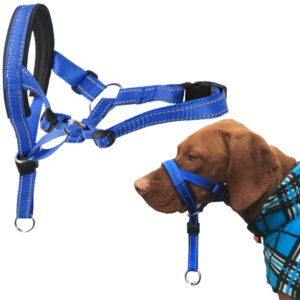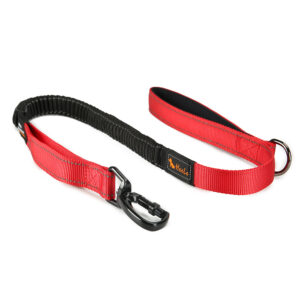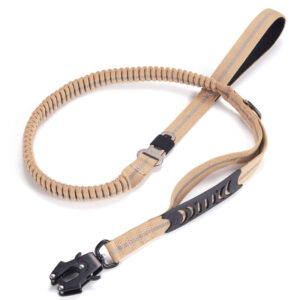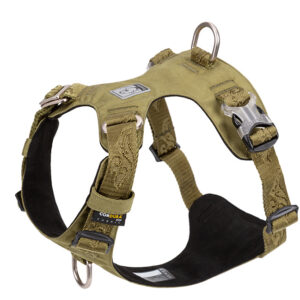Table of Contents
Why is leash selection so important?
Deciding what leash to use for your dog is a crucial decision. It may seem like a small thing, but using the wrong lead can impact your comfort and safety. It can mean the difference between an enjoyable bonding experience and a frustrating battle of wills between you and your dog.
If you are a responsible dog owner, you and your dog are likely to walk together every, single, day. So, choosing what leash to use has a significant ongoing impact on you both. Let’s examine the most common types of dog leashes and the benefits of each. This guide will help you make an informed decision about what dog leash is best for you and your dog.
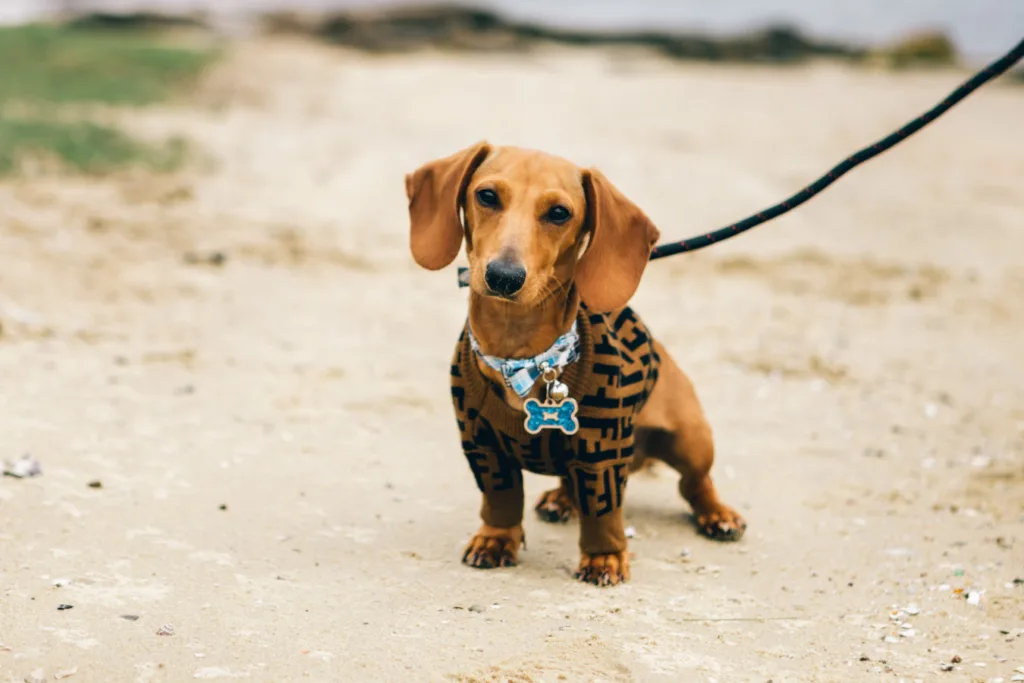
The most common types of dog leashes, and their benefits
1. Standard
Also known as a flat leash, the standard leash is a simple and reliable option favoured by most dog owners. Classic flat leashes feature a handle at one end and a clasp at the other and may be made from a variety of materials. Standard leads are available in a range of different lengths, usually between one and three metres. Suitable for everyday walks and outings, the standard leash provides a balance between freedom and control for dogs of all shapes and sizes.
2. Retractable
This leash type features a mechanism that extends and retracts, allowing your pup a sense of freedom while maintaining a level of cautious control. This means your dog can roam a little further from you while allowing you to create limits and boundaries when necessary. Using a retractable lead requires careful supervision and management. They are not suitable for reactive dogs and strong pullers.
3. Training
Training leads are available in a wide variety of lengths and styles designed to address specific needs. Long training leashes aid in recall training and are valuable for teaching commands at a distance. Shorter training leashes often feature multiple handles for close control on the walk and during training sessions. Training leads are designed to promote obedience and discourage problem behaviours, so it’s important to select the right lead for your dog’s unique needs. You may even consider consulting a qualified trainer to help you decide what leash to use.
4. Bungee
Bungee leads are designed for comfort. Your comfort. The bungee leash features a heavy-duty bungy section that acts as a shock absorber for sudden pulls, reducing the impact on both of you. This leash is great for dogs with a little too much ‘enthusiasm’ on walks. Bungee leashes are great for reactive dogs and can help save your wrists and shoulders from a world of pain. We love this kind of lead.
5. Hands-Free
Have you ever wanted to go adventuring with your dog without having to hold onto a bothersome leash? A hands-free leash is a great option for active dog owners. Simply attach your dog’s leash to a strap worn around your waist or shoulders. You can enjoy freedom of movement while your dog is safely attached to you. This kind of lead is not suitable for reactive or unpredictable dogs. You don’t want to get pulled off your bike.
6. Slip Lead
The slip lead is a collar and leash in one, forming a loop that self-tightens on the dog’s neck when pulled. It’s a straightforward design that offers effective control, so it’s suitable for training purposes and temporary walks. The slip lead can be a fantastic tool, but if used incorrectly this kind of lead can be extremely uncomfortable for your dog. Make sure you seek out directions for use before subjecting your dog to a potentially awful walking experience.
7. Multi-Dog
Manage multiple companions with this leash that allows you to walk several dogs at once. Multi-dog leashes often allow for multiple configurations, usually featuring a single handle with multiple separate leashes attached to a central anchor point. Multi-dog leashes reduce the likelihood that your multi-dog walk will end in a tangled mess.
8. Other Leashes
Rain, hail, day, or night, it’s always wise to use a leash that is fit for purpose. Waterproof leashes are crafted from materials that resist water absorption, making them perfect for rainy walks, beach outings, or other wet environments. Reflective or LED leads improve nighttime visibility, enhancing safety in low-light conditions by making you and your dog more visible to others.
What to consider when deciding what leash to use for my dog
There are loads of factors to consider when deciding what leash to use for your dog. It is necessary to consider your dog’s size, temperament, behaviour style, and your own needs and preferences. Whether you choose an all-purpose classic standard leash, a specialised training leash, or a leash designed for adventures, the goal is always to enjoy the bond you have with your canine friend and to have fun.
Halter Harness for Dogs
$22.50HEELE Bungee Leash for Dogs
$29.95Bungee Reflective Dog Leash with Handle
$53.44TRUELOVE Dog Harness Active
$70.00 – $110.00

